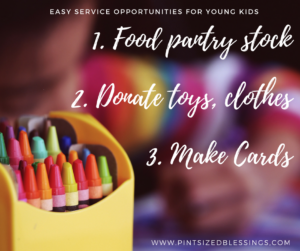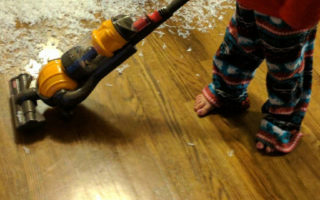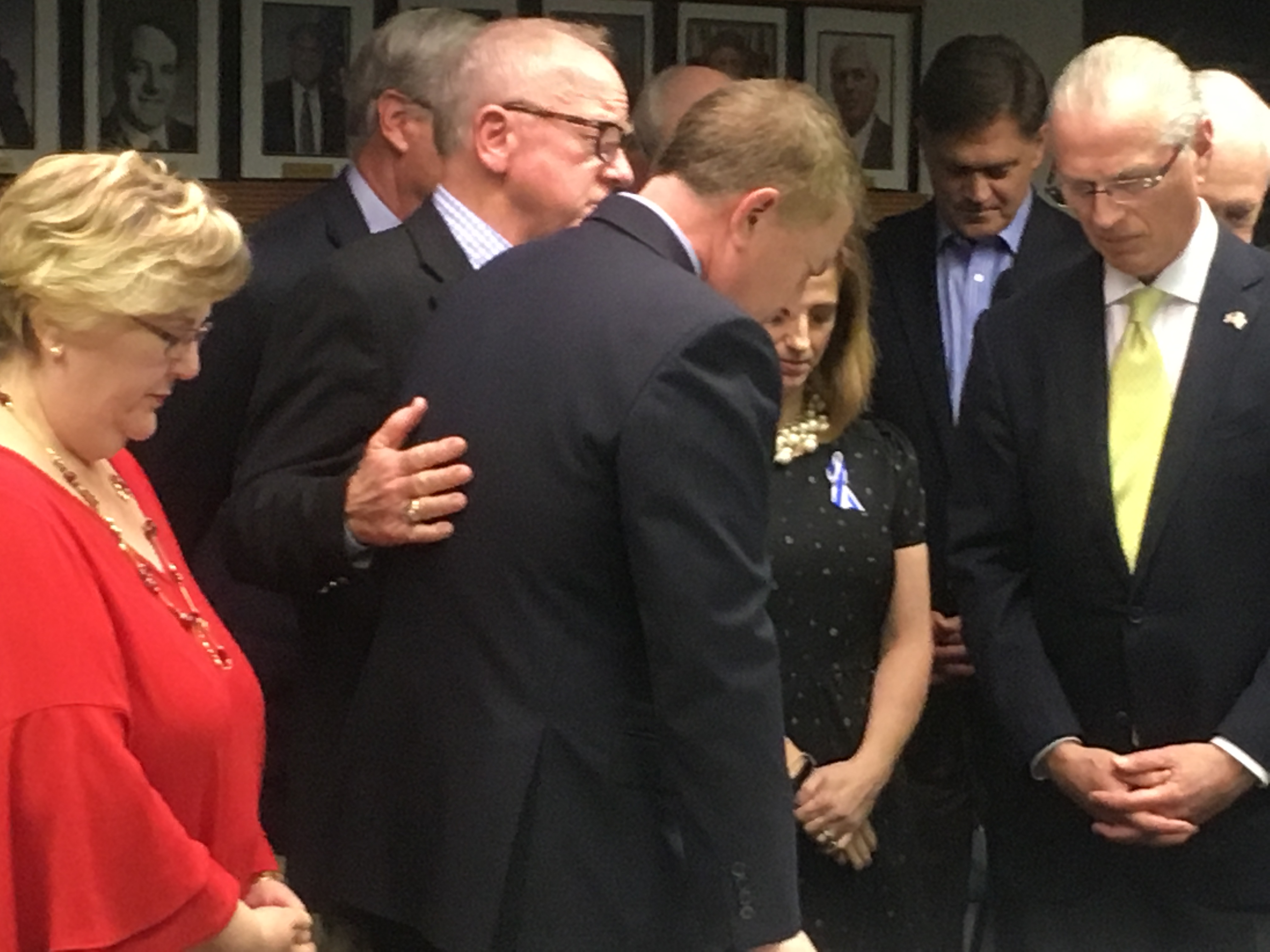Kids count. Their hands may be small. But their hearts are enormous. Never underestimate how eager and capable their little hands are of making a big difference in the community. Can your children walk and talk? If so, they’re old enough to volunteer. Satisfy their curiosity and show that they’re never too young to make a difference by trying one of these 10 activities.
1. Stock a food pantry
This is a great (and inexpensive) place to start for younger volunteers. Children understand hunger and the need for food. Let them pick up a few canned food or other non-perishable food items at the grocery store. We’ve made a habit of doubling every non-perishable item that we purchase on our weekly grocery store trip. I pick out what we need. They pick out what we donate to a local food pantry. Many churches and Christian missions operate food pantries and will happily accept your donations. Some may even let your children come in and stock their donations.
2. Collect toiletries
Next time you are on vacation, let your children take those travel size soaps and shampoos home. Local homeless shelters are always looking for travel size toiletries to give to their guests. They also are in high demand following natural disasters and whenever cities open warming shelters in the winter.
3. Donate gently used clothes
This is another good way for younger children to give back. Gently used clothing, especially jackets, gloves, hats and blankets, are always welcomed by Salvation Army and Goodwill locations. Churches will often host drives when the temperatures drop. Allow your children to sort through their old clothes and explain how their old clothing can keep another child warm and comfortable on a cold day.
4. Give away gently used toys
This one is a little harder for younger children. Mine seem to have a special alarm that goes off whenever a toy that they’ve outgrown and haven’t touched for almost a year goes missing. But take some time to explain why they don’t need this toy any longer and how it will bring another child joy. Daycare centers, churches and other charitable organizations are always looking for gently used toys, gliders, books and puzzles.
5. Make snack packs
Fill a large ziplock bag with peanut butter crackers, granola bars, water, and perhaps some lip balm and even inexpensive mittens if it’s cold outside. There are no rules. Just think about easy to eat and easy to transport items. Set up an assembly line and let the children fill the bags. Shelters are often looking for extra snacks when the facilities get close to capacity. There are also teams of volunteers that often travel around the community directly interacting with people living on the street.
6. Collect old newspapers
Perhaps not the easiest suggestion since many cities no longer have a daily newspaper. But if relatives or neighbors do subscribe to a weekly one, ask them to set it aside for you. Children can collect them and take them to the local human society.
7. Assemble disaster kits
Cleaning supplies are in high demand and often very hard to find following hurricanes, tornadoes, floods and other natural disasters. Simply collect some cleaning supplies. Or assemble a disaster kit by putting items like dishwasher soap, laundry soap, garbage bags, gloves, sponges, rope, cleaning brushes, hand sanitizer and even a mask into a large plastic bucket with a lid. Some disaster programs run through Christian churches accept these kits year round. Others will collect them following disasters.
8. Make a donation
There are so many ways for children to find or raise some money to help a local organization. Let them collect extra change around the house. Encourage them to put aside some birthday money. Give them some choirs to earn money or set up a lemonade stand. They can then select and learn about an organization to donate the money to.
9. Create cards
This is perhaps the easiest opportunity for young children to make a difference. All they need is paper, crayons and a little imagination. The options of who or where to send the cards is seemingly limitless- natural disaster survivors, patients at a children’s hospital, nursing home residents, first responders, etc..
10. Thank a first responder
Let’s face it- these men and women work long hours often in less than ideal conditions. They spend holidays and other time away from their families to keep our families safe. Encourage children to build a relationship with these men and women. A simple “hi” and an introduction is a good way to teach children about their jobs and why we go to them when we need help. Ask to stop by a station even bring some food by. Our girls brought some food and pictures to a local fire station. We did it to thank them for their incredible response to several bomb threats. But the girls got to explore the station and more importantly, get to know the firefighters outside of an emergency situation. Now, whenever we drive by the station, pass a fire truck or see firefighters, they’re quick to say, “look, there are our friends!”
Giving back doesn’t have to take a lot of time or money. Simple gestures and seemingly small acts of kindness can bring smiles and joy into your hearts and the lives of so many others.




